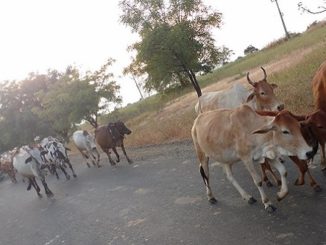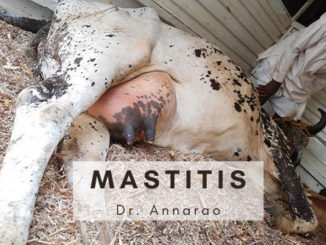As a common saying “that enemy is more dangerous which attacks from back rather than which attacks from front. In a similar way the diseases which show their distinct signs are less dangerous than from those diseases which do not show their signs, As we know the diseases which show their signs can be easily diagnosed and treated but the diseases which do not manifest their signs cannot be easily diagnosed as a result of this treatment of those diseases is very difficult. In animals there is manifestation of similar type of disease which do not show its s during its onset is Infectious Bovine Rhinotracheitis (IBR).
This disease is prevalent in most of countries of world. In India this disease is continuously growing at very fast pace among animals. This disease transmits at very fast pace from one animal to other animal. So within a short period a large number of animals become infected from this disease.
Cause of IBR
The root cause of this disease among animals is Herpes’ type 1 virus. A special feature of this virus is that if once this virus enters in the body of animal, this virus stay permanently in that body. This virus enters through respiratory and genital tract of animal, where these viruses continuously grow in number. From this site virus enter in neurons of animal where they stay throughout life of that animal. This virus transmit from diseased animal to healthy animal via direct contact or may transmit from place where diseased and healthy animals live together. This type of animal becomes permanent carrier of this disease. This type of animal within a short period spread disease among large number of animals. It has been seen sometimes the virus spread from one animal to other animal through clothes and shoes of workers which deal with rearing of affected animals. Sometimes through breathing of affected animals this virus spread from diseased animal to healthy animal. In pregnant animal this animal migrates from its respiratory tract to its uterus and affects the fetus present in uterus of that animal which results into birth of diseased calf.
This disease has been graded as one of the most dangerous disease at international level, resulting in drastic effect on trading of products which are prepared from these diseased animals, at international level. The animals which become infected from this disease cannot be reared in semen stations as well as bull farms as this disease transmit from semen of male animal to female animals.
Clinical Symptom and Diagnosis
The main clinical symptoms of this disease among female animals are abortion, repeat breeding, anestrous, and fever, loss of appetite, lacrimation and nasal discharge. Sometimes there is development of pneumonia in animals. Occurrence of mortality among animals suffering from this infection is very low. Apart from clinical symptoms for identification of this disease testing of milk and blood sample is also done.
Treatment
As it is a viral disease, so no particular treatment of this disease but antibiotics are given to animals to protect them from secondary bacterial infection. Apart from antibiotics anti inflammatory and anti allergic medicines are given to animals.
Prevention
For prevention of this disease, animals must be vaccinated against this disease. The vaccine of this disease must be given to calves at 3 month of age. After that booster dose of this vaccine must be given once or twice in a year according to prevalence of this disease in herd. In adult female animals this vaccine should be given 30 to 60 days prior to insemination.
At international level this disease is considered as one of the most dangerous disease because virus of this disease transmit from semen of male animal to female animals. So an infected male animal from this disease can affect large number of females by its semen in a short period.
Second important point about this disease is that once virus of this disease enter in the body of animal, it remains in body of animal throughout its life and this animal becomes permanent carrier of this disease throughout its life.
Third important point regarding this disease is that if any animal becomes affected from this disease, at international level trading of these animals is banned.
In Punjab during testing of animals for this disease it was observed that there is very high incidence of this disease among animals. It is very important to understand that if male calves produced from infected animals are reared and used for natural insemination in households or used for production of semen at bull farms or semen stations, they may proliferate this disease at very high pace in females and a large number of female animals can get infection in a very short period.
This is a need of hour that there must be implementation of strict steps to prevent transmission of this disease among animals so that animals can be prevented from this disease. The only solution to prevent this disease among animals is time to time vaccination of animals against this disease.
|
The content of the articles are accurate and true to the best of the author’s knowledge. It is not meant to substitute for diagnosis, prognosis, treatment, prescription, or formal and individualized advice from a veterinary medical professional. Animals exhibiting signs and symptoms of distress should be seen by a veterinarian immediately. |






Be the first to comment